10 Best Cities for Cheapskates
Next time someone calls you a "cheapskate," take it as a compliment.


Next time someone calls you a "cheapskate," take it as a compliment. After all, frugality is the new black in these post–Great Recession times. Even the super-rich pinch pennies to help them stay that way. And bargain-hunting is practically a televised sport (see Extreme Couponing on TLC or news coverage of Walmart on Black Friday for proof).
So, if now is prime time to be a cheapskate, where is the best place to be one? We scoured the country for cities where living costs are well below average and incomes are higher than average. The unique combination of prosperity and affordability should appeal to cheapskates and spendthrifts alike.
Plus, to guarantee an abundance of low-cost activities, we looked for places with plenty of public libraries and museums — primo purveyors of interesting free (or nearly free) things to do, from concerts and films to lectures and performances. And for thrifty shopping options, we counted up all the Dollar General stores, a cheapskate favorite, in a ten-mile radius of each city.
The slideshow of our ten picks begins by clicking the navigation bar above.
Disclaimer
Population and income data courtesy of the U.S. Census Bureau. Cost-of-living data provided by the Council for Community and Economic Research, which tracks living expenses nationwide. The Institute of Museum and Library Services tallies public libraries and museums across the U.S.
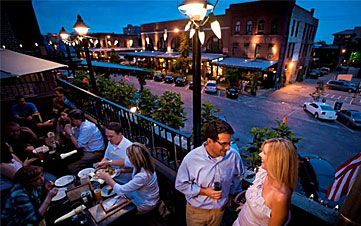
1. Omaha, Neb.
- Metro population: 856,222
- Cost of living: 12.3% below average
- Median household income: $56,346 (U.S.: $52,762)
- Nearby public libraries and museums: 155 (U.S. average: 56)
- Dollar Generals within ten miles of downtown: 11
Home to famously frugal billionaire Warren Buffett, Omaha tops our ranking of best cities for cheapskates and sports the lowest cost of living in the country of all cities with median incomes above the national level. The Oracle himself has taken advantage of the area's affordable housing costs, which fall 18.8% below the national average, and remains in the 6,000-square-foot, five-bedroom home he purchased for $31,500 in 1958 (despite the fact that he's now worth an estimated $53.5 billion). Omaha's median home value is just $144,800 (versus $186,200 for the nation), and the average apartment rent is $740 a month. (Find the best, latest mortgage rates in the Omaha area.)
And you'll find plenty to keep you entertained in the largest city in Nebraska, which has 1.8 public libraries and museums per 10,000 people and a flurry of free activities. You can check out the Gene Leahy Pedestrian Mall and the Old Market's more than 80 shops plus 30 pubs and restaurants. Watch the birds migrate along the Missouri River valley. Or enjoy one of the city's many festivals, including Taste of Omaha and Shakespeare on the Green.
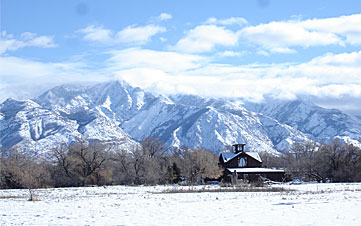
2. Ogden, Utah
- Metro population: 537,608
- Cost of living: 10% below the national average
- Median household income: $62,340
- Nearby public libraries and museums: 66
- Dollar Generals within ten miles of downtown: 2
Low costs plus fat paychecks can add up to big savings in Ogden, the second-smallest city on our list. Ogden residents earn the highest household income of all our cheapskate cities, 18.2% more than the U.S. median. But expenses for housing, groceries and utilities are all below average, and health care costs are the most affordable of all these cities, at 8.8% below average.
If you're looking for a bigger Utah city that's almost as affordable as Ogden, Salt Lake City — No. 7 on our cheapskates list — is just about 40 miles away. Or stick with Ogden proper and enjoy the 100-year-old 25th Street Historic District, the 152-acre Nature Center ($4 for adults; free for members) and Dinosaur Park ($7 for adults; $5 for kids ages 2 to 12), sprawling grounds populated with life-size models and educational exhibits for budding paleontologists.
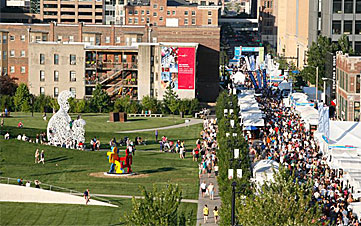
3. Des Moines, Iowa
- Metro population: 562,406
- Cost of living: 8.7% below average
- Median household income: $59,381
- Nearby public libraries and museums: 108
- Dollar Generals within ten miles of downtown: 14
With low living costs across the board, Iowa's capital is sure to please. Both grocery and health care expenses are about 6% cheaper than average. The median home value is $153,700, or $32,500 less than the national median. Apartment dwellers enjoy equally affordable housing costs, with an average rent of just $754 a month (about a third less than the U.S. average).
You'll have plenty of places to go around town if you're looking for affordable fun. The concentration of public libraries and museums is the second highest of all the cities on this list, with 1.92 per 10,000 people. You can enjoy both the Des Moines Arts Festival and ArtFest Midwest ("The Other Art Show") for free.

4. Columbus, Ohio
- Metro population: 1.8 million
- Cost of living: 12% below average
- Median household income: $54,112
- Nearby public libraries and museums: 241
- Dollar Generals within ten miles of downtown: 24
Hit the Buckeye State for more-affordable living. Columbus has the second-lowest overall living cost of all the cities on this list and below-average costs on everything from groceries to health care. On average, a gallon of milk will cost you 18.6% less in Columbus than it would in most of the country. And speaking of dairy, samples at local favorite Jeni's, named one of the best ice-cream parlors in the U.S., are free.
Home to Ohio State University, Columbus offers plenty of campus amenities to the entire town. The 10,000-square-foot Urban Arts Space downtown, for example, offers free admission, and many Ohio State arts and sciences events and gallery exhibitions cost nothing as well. To escape the college crowd, you might enjoy a visit to the Ohio Theater, Columbus Museum of Art (free on Sundays) or the Columbus Zoo ($10 for kids, ages 2 through 9; $15 admission for ages 10 through 59; $11 for people 60 or older). And every summer, the Ohio State Fair attracts 800,000 people with 70 rides and 189 food vendors for the very low entry price of $10 per adult (less for seniors, kids and advanced-sale tickets).
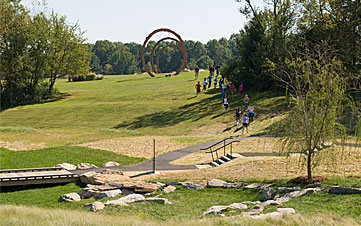
5. Raleigh, N.C.
- Metro population: 1.1 million
- Cost of living: 7.8% below average
- Median household income: $61,407
- Nearby public libraries and museums: 100
- Dollar Generals within ten miles of downtown: 8
Head south for an excellent opportunity to save. While sporting the lowest average housing-related costs of all the cities on this list — a whopping 30.7% below the national average — Raleigh still affords its residents a generous household income, the second-highest of our cheapskate cities.
Affordability extends outside of the home, too, with more than 40 free cultural attractions to enjoy around town. You can visit the North Carolina Museum of Art and its 164-acre Museum Park, complete with picnic tables, wooded trails and more than a dozen outdoor works of art. The state's museums of history and natural science, as well as its sports hall of fame, also charge no admission. See future NBA stars for less when college-basketball powerhouses Duke, UNC and Syracuse play North Carolina State on its home court in Raleigh.

6. Cincinnati
- Metro population: 2.1 million
- Cost of living: 9.2% below average
- Median household income: $54,651
- Nearby public libraries and museums: 284
- Dollar Generals within ten miles of downtown: 11
Credit low housing and utilities costs for Cincinnati's cheapskate appeal. Home values in Ohio's largest metro area stand 16% below the national median, at $156,400. (Find the best, latest mortgage rates in the Cincinnati area.) And the average rent for an apartment is just $754 a month, compared with an average of $1,110 a month for the U.S. Energy costs total 17.7% less than the national average.
But lower costs do not equate to fewer free, fun activities. Cincinnati offers the second-greatest number of public libraries and museums on this list. There are also five regional and 70 neighborhood parks, 34 nature preserves and a 1,459-acre forest to explore. Plus, throughout the summer, you can enjoy free concerts six days a week on Fountain Square.
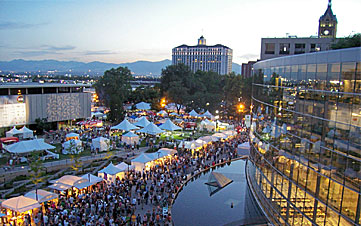
7. Salt Lake City
- Metro population: 1.1 million
- Cost of living: 7.3% below average
- Median household income: $59,930
- Nearby public libraries and museums: 134
- Dollar Generals within ten miles of downtown: 0 (but 12 Dollar Tree stores within ten miles)
Most of your living costs in Salt Lake City will add up to less than the national average. Housing and utilities are the biggest budget savers — 15.9% and 13.7% below typical costs, respectively. Food, transportation and health care also contribute to the area's affordability. Visiting a doctor in Salt Lake will cost you 13.2% less than it would in most parts of the country.
Let Mother Nature be your guide for economical entertainment. Nestled in the valley between the Wasatch and Oquirrh Mountains, the city provides easy access to trails and slopes for every season's outdoor enthusiast. In fact, National Geographic named Salt Lake one of the best U.S. cities for hiking and nearby Park City one of the world's best towns for skiing.
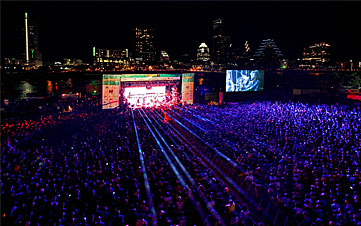
8. Austin, Texas
- Metro population: 1.7 million
- Cost of living: 6.9% below average
- Median household income: $59,476
- Nearby public libraries and museums: 201
- Dollar Generals within ten miles of downtown: 17
- Music lovers will have no shortage of affordable venues to visit. You could see more than 250 live performances without having to revisit a single spot (challenge extended). For free, during the summer, you can partake in Austin Sound & Cinema, a six-week series of film screenings paired with live musical performances that complement the movie of the night. And though an entry badge for the popular South by Southwest festival would cost you hundreds, you can freely enjoy its music from almost anywhere downtown — the sounds travel well beyond the confines of many venues — or hit the growing number of unofficial events around town during festival time that cost nothing.
The Texas capital is as friendly to cheapskates as it is to weirdos (a popular city slogan pushes to "Keep Austin Weird"). Food, housing, utilities and transportation in the area are all priced well below the national average, and local groceries prove to be the most affordable of all the cities on this list at 10.4% under par. Meat-eating misers will be particularly happy — the typical T-bone steak costs less in Austin than it does in any other city on our list, at 24.2% below average.
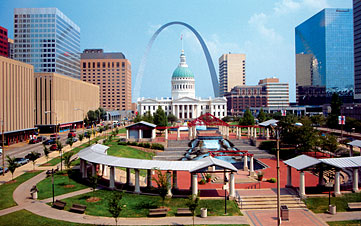
9. St. Louis
- Metro population: 2.8 million
- Cost of living: 8.6% below average
- Median household income: $54,149
- Nearby public libraries and museums: 450
- Dollar Generals within ten miles of downtown: 16
Small costs can be found in big cities. Sure, St. Louis holds just a fraction (14.9%, to be precise) of the population contained by New York City's mega-metro area. But it's the biggest city on this list and houses the greatest number of public libraries and museums of all our cheapskate cities. The concentration of those institutions is 1.6 per 10,000 people, beating the Big Apple's 1.3.
Housing is the biggest contributor to St. Louis's affordability. The Council for Community and Economic Research estimates that the area's housing-related expenses fall 27% below the national average. The median home value is $160,400, or $25,800 less than the national median. (Find the best, latest mortgage rates in the St. Louis area.) The average apartment rent is just $766 a month, versus $1,110 for the nation as a whole.
Frugal bonus: You can visit the city zoo, explore the science center and enjoy the Citygarden, a mixed-use sculpture park in downtown St. Louis, for free.
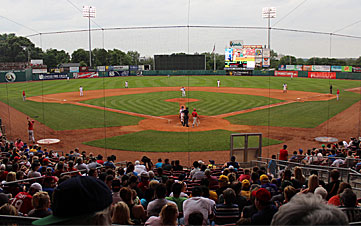
10. Cedar Rapids, Iowa
- Metro population: 256,799
- Cost of living: 6.3% below national average
- Median household income: $55,196
- Nearby public libraries and museums: 61
- Dollar Generals within ten miles of downtown: 7
Big bargains come in small packages, too. The least populous city on our list, Cedar Rapids offers below-average transportation and grocery costs, and its biggest budget saver is housing. The median home value in Cedar Rapids is $137,100, according to the Census Bureau — the lowest of all the cities on this list and $49,100 below the national median. The city's average apartment rent is also the lowest on our list, at just $617 a month, 44.4% less than the U.S. average, according to commercial real estate research firm Reis.
The tiny metropolis packs in affordable fun. Of all the cities on this list, it has the highest concentration of public libraries and museums — 2.4 institutions per 10,000 people, topping the U.S. average of 1.5. For no charge, you can explore the city's 74 parks, the Indian Creek Nature Center and, after 4 p.m. on Thursdays, the Cedar Rapids Museum of Art. Like sports? The Kernels, class A affiliate of baseball's Minnesota Twins, offer lawn seats for just $7. Frugal fans, in particular, will enjoy Dollar Mondays ($1 hot dogs and Cracker Jacks) and Thirsty Thursdays ($2 beers and sodas).
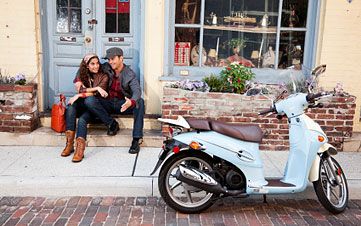
2012 Rankings
1.St. Louis
2.El Paso, Texas
3.Springfield, Ill.
4.Kalamazoo, Mich.
5.Spokane, Wash.
6.San Antonio
7.Eau Claire, Wis.
8.South Bend, Ind.
9.Jonesboro, Ark.
10.Wichita, Kan.
Kiplinger updates many of its "best places" rankings annually. Here is last year's list of the best cities for cheapskates. Keep in mind that ranking methodologies can change from year to year based on what data were available at the time of publishing, changes to how the data were gathered, switches to new data providers and tweaks to the formulas used to narrow down the pool of candidates.

Get Kiplinger Today newsletter — free
Profit and prosper with the best of Kiplinger's advice on investing, taxes, retirement, personal finance and much more. Delivered daily. Enter your email in the box and click Sign Me Up.

Rapacon joined Kiplinger in October 2007 as a reporter with Kiplinger's Personal Finance magazine and became an online editor for Kiplinger.com in June 2010. She previously served as editor of the "Starting Out" column, focusing on personal finance advice for people in their twenties and thirties.
Before joining Kiplinger, Rapacon worked as a senior research associate at b2b publishing house Judy Diamond Associates. She holds a B.A. degree in English from the George Washington University.
-
 Fired Up By the Masters and RBC Heritage? See These Homes for Sale By Golf Courses
Fired Up By the Masters and RBC Heritage? See These Homes for Sale By Golf CoursesFive homes for sale near golf courses, for people who can't get enough of the tour.
By Alexandra Svokos
-
 The Economic Impact of the US-China Trade War
The Economic Impact of the US-China Trade WarThe Letter The US-China trade war will impact US consumers and business. The decoupling process could be messy.
By David Payne
-
 12 Great Places to Retire in the Midwest
12 Great Places to Retire in the MidwestPlaces to live Here are our retirement picks in the 12 midwestern states.
By Stacy Rapacon
-
 10 Cheapest Small Towns to Live In
10 Cheapest Small Towns to Live InThe cheapest small towns might not be for everyone, but their charms can make them the best places to live for plenty of folks.
By Dan Burrows
-
 Best Cold Weather Places to Retire
Best Cold Weather Places to RetirePlaces to live Some like it hot; others not so much. Here are the 12 best places to retire if you can't stand the heat.
By Stacy Rapacon
-
 The Cheapest Places To Retire in the US
The Cheapest Places To Retire in the USWhen you're trying to balance a fixed income with an enjoyable retirement, cost of living is a crucial factor to consider.
By Stacy Rapacon
-
 The Six Best Places to Retire in New England
The Six Best Places to Retire in New Englandplaces to live Thinking about a move to New England for retirement? Here are the best places to land for quality of life, affordability and other criteria.
By Stacy Rapacon
-
 Best Cold Weather Places to Retire
Best Cold Weather Places to Retireplaces to live Some like it hot; others not so much. Here are the 12 best places to retire if you can't stand the heat.
By Stacy Rapacon
-
 15 Ways to Prepare Your Home for Winter
15 Ways to Prepare Your Home for Winterhome There are many ways to prepare your home for winter, which will help keep you safe and warm and save on housing and utility costs.
By Donna LeValley
-
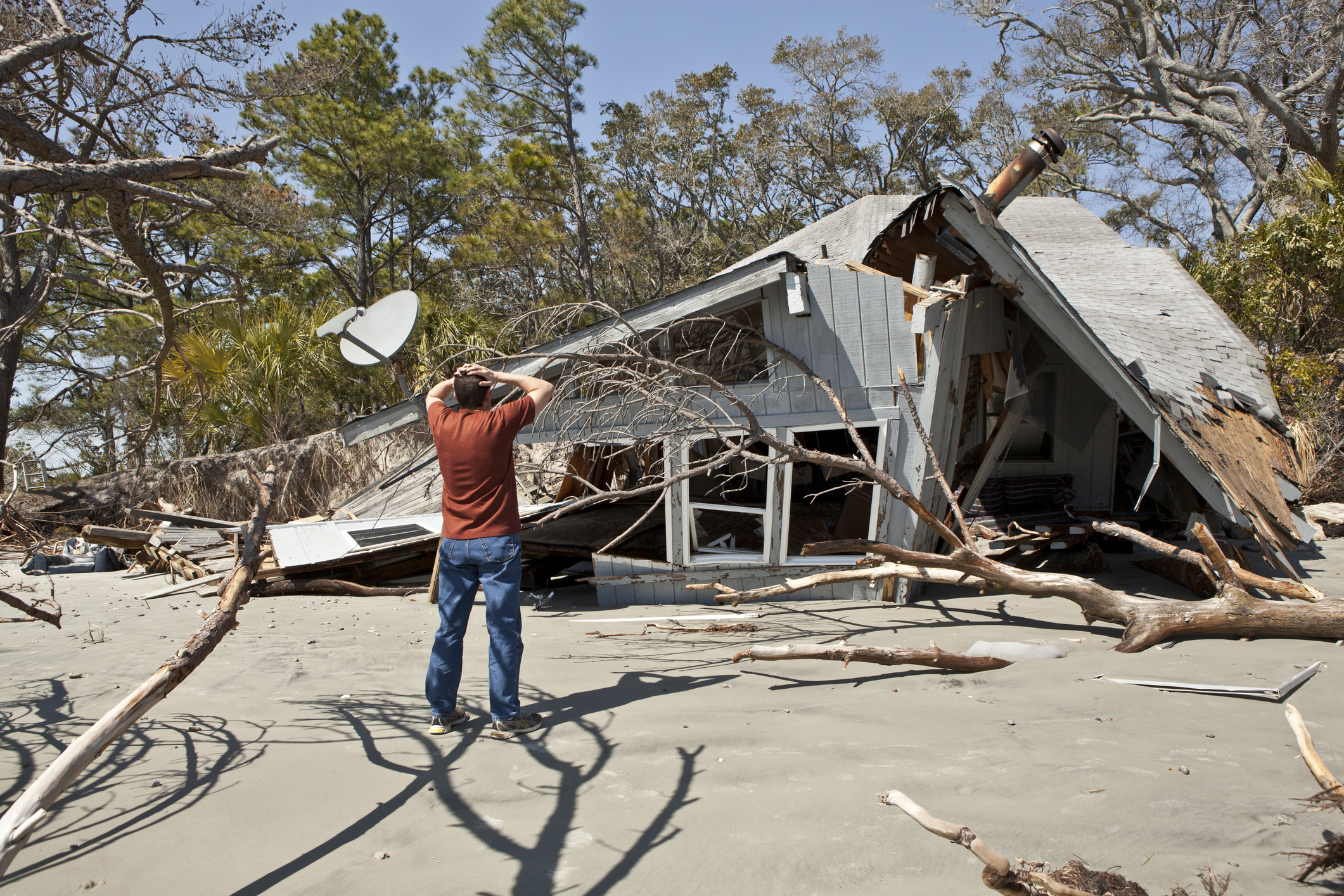 Hurricane Insurance Claims: 10 Things You Need to Know
Hurricane Insurance Claims: 10 Things You Need to KnowBecoming a Homeowner Hurricane damage? Know what your insurance will and won't cover to make the most of your policy if you need to file a claim.
By Kimberly Lankford
